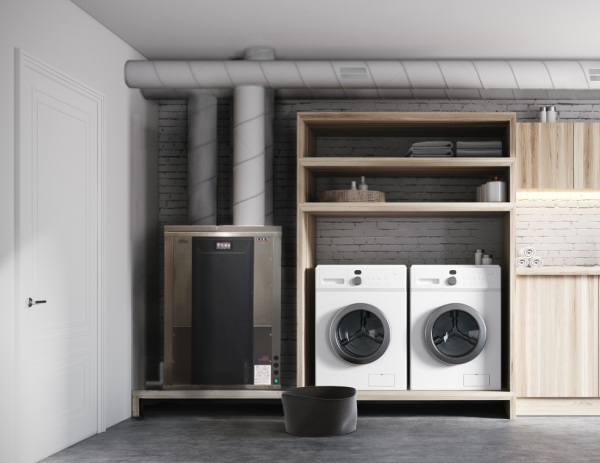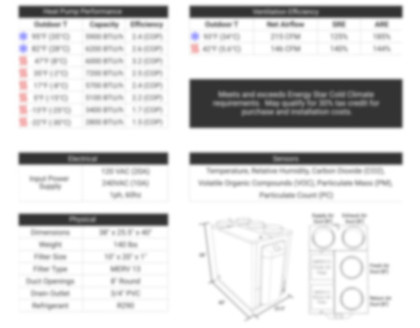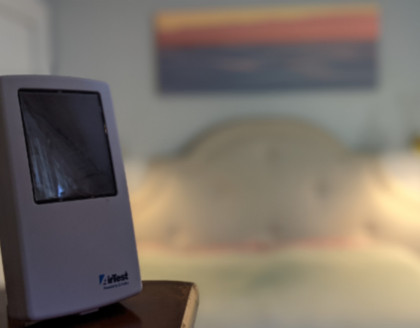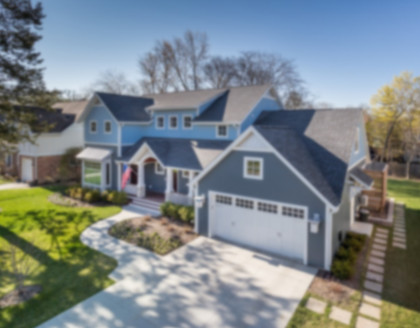Efficiently maintaining a healthy indoor environment is complicated. Automatic control, or “smart ventilation”, is important for meeting a home’s dynamic fresh air requirements while relieving the home occupants’ stress worrying about air quality. Effective distribution of fresh air within a home is essential for ensuring all occupied regions within a home are kept healthy.
Indoor pollutants rapidly change minute-by-minute and from one room to another within a home as occupancy, occupant activity, and wind-driven infiltration vary. For example, one person in a typical bedroom without ventilation increases carbon dioxide from 400ppm (outside air) to the threshold of bad air quality (1000ppm of carbon dioxide) in less than 40 minutes! Light exercise or increased mental stress will cut the time in half. Moderate exercise or physical activity such as cleaning will cut the time in half again. A person’s carbon dioxide and VOC (Volatile Organic Compound) pollutant output varies by a factor of ten from sleeping to vigorous physical activity.
It is a myth that “leaky” homes have good air quality. Air quality in a leaky home blows with the wind. Excess air, outdoor pollutants, and particulates blow into a leaky home during windy days while calm days have insufficient air flow and poor indoor air quality.
Homes with high efficiency HRVs following a fixed (ASHRAE 62.2-2016) ventilation schedule have either too much air flow or too little. Homes with too little ventilation have poor air quality that causes illness, poor health, and degraded cognition and sleep. Homes with too much ventilation use excess energy. Ironically, home’s with excess ventilation are often polluted in occupied rooms.
Our two reports examine smart ventilation and smart air distribution with field data and detailed computer simulation modeling. We compare indoor air quality data from real homes with CERV smart ventilation to homes without smart ventilation. We use detailed computer modeling with real winter weather data to demonstrate why today’s average home with average occupancy with smart ventilation requires less energy than the same home with a high efficiency (90%) HRV and scheduled (one-and-done) ventilation.
The two reports can be summarized as follows:
- Today’s average-sized US new construction home with CERV2 smart ventilation reduces infiltration and ventilation related energy during a challenging winter month by 28% (3ACH50 sealed home) to 42% (0.6ACH50) in comparison to the same home with a 90% efficient HRV operating at ASHRAE 62.2-2016 constant ventilation levels
- For homes with 3ACH50 sealing characteristics, wind blown infiltration will provide the majority of a home’s ventilation needs, while homes achieving 0.6ACH50 sealing require active ventilation to meet fresh air needs. In both cases, smart ventilation systems outperform constant flow, high efficiency HRV systems in terms of air quality and energy
- One-and-done (constant flow) HRV ventilation systems without recirculation cause poor air quality in occupied rooms and waste fresh air in unoccupied rooms. In addition, particulate concentrations are higher in homes with constant flow HRV ventilation than the same home using smart air distribution with recirculation
- Larger and more complex homes (house volume recirculation times greater than 1 to 2 hours) should consider zone control with remote air quality sensors for automatically delivering fresh air to occupied regions of a home
Our Vermod report demonstrates that CERV smart ventilated homes maintain excellent air quality and energy efficiency in homes. The annual energy usage of the study homes averaged 3650kWh per occupant and 9kWh per ft2 in a challenging climate!
The new Smart Ventilation and Smart Air Distribution reports provide analyses and field data to explain how and why the CERV2 smart ventilation system is more effective in maintaining excellent air quality in an energy efficient manner. Read our Preventilation reports linked below, and follow Build Equinox’s continuing developments focused on improving health and well-being in our homes.
Related Articles
descriptionPreventilation Part 1: Smart Ventilation
descriptionPreventilation Part 2: Smart Air Distribution
























